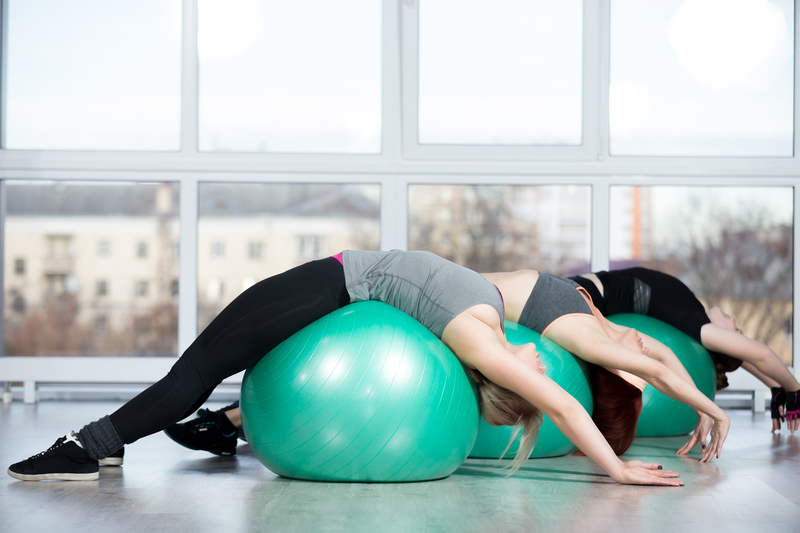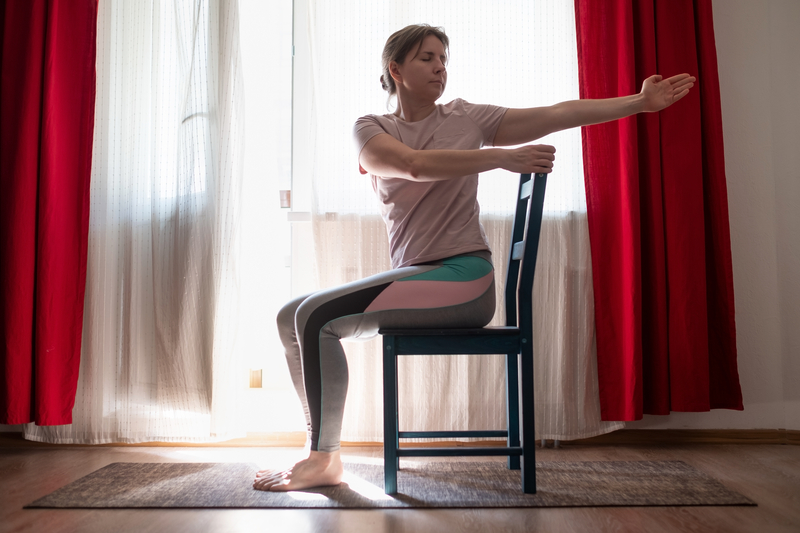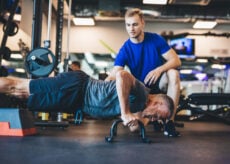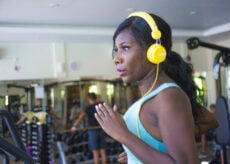Prevent Back & Neck Pain with These Simple Exercises

Back and neck pain are so prevalent they almost seem like the norm. Since your neck and back are both part of your spine, these types of pain are all too common and often interrelated. But, a few simple exercises can help you alleviate pain in both areas. Find out how.
What Is Classified as Neck Pain?
There are a lot of different aches and pains we can all suffer from, but neck pain is one of the most common. The technical term for neck pain is “cervicalgia,” and it refers to pain around your neck and other areas that connect to your neck.
Your neck pain can be axial or radicular. Axial pain refers to pain that’s localized to your neck area, whereas radicular pain is pain that radiates. It may manifest in your shoulders, arms, traps, or back.
Your pain can also be acute (lasting several days or more) or chronic (a nagging pain that doesn’t go away for several months).
What Is Back Pain?
Back pain can refer to pain anywhere along your spine, and, like neck pain, it can radiate out to different areas of your body. It might manifest as throbbing, stabbing, tingling, numbness, sharp, shooting, aching, or dull and constant pain.
One of the most common types of pain, back pain can be due to a variety of reasons, including falls, sudden movements, inflexibility, lifting incorrectly, an accident, and even degenerative or age-related adaptations.
Your back has four main areas: the cervical spine (neck area), thoracic spine (mid-back), lumbar (mid-lower), and sacrum/coccyx (very lower back). It’s easy to see that back and neck pain are closely entwined and that working one area can also help the other areas of your back and neck.
Try These Simple Exercises for Back and Neck Pain
Always start with a gentle warm-up before attempting any exercise. Your muscles must be warm and pliable so you don’t make existing issues worse. Adding these back and neck exercises to your routine several times a week can make a positive difference in the amount of pain you have.
Basic Head Tilts—you can do these neck exercises either sitting or standing. Keep facing forward while you drop your head sideways to the right, hold for a count of two, return to the center, and then drop your head to the left for a count of two. If you’d like to add a little resistance, try gently pulling downward on your head with your hand to feel a good stretch through your neck. Do five for each side.

Yes & Nos—start by simply turning your head to look all the way to your right. Hold that position for a count of two. Then, turn your head all the way to the left and hold that position for a count of two. Repeat five times for each side. Next, while facing forward, drop your head to the front for a count of two and then let it gently fall back until you feel a stretch on the front of your neck for a count of two. Repeat five times in each direction.

Shoulder Shrugs—simply shrug your shoulders upward and flex them as hard as you can. Next, roll your shoulders back and down to bring them to the normal starting position. Do two sets of 10.

Resistance Band Rows—wrap or tie a lightweight resistance band at chest height around a doorknob or other stable object. Grabbing one end of the band in each hand, stand with your feet about hip-width apart and step back until there’s tension on the band. Next, pull your elbows as hard as you can toward your back. Hold for two seconds, and then bring the band back to the starting position, arms in front of you. Repeat for 2 sets of 20.

Stability Ball Backbends and Sit-Ups—this is a great way to stretch your back, neck, and core. Simply lie with your mid-back on a stability ball with your feet on the ground and your arms straight and hanging out to the sides. Allow your body to hang and stretch for 10 seconds. Then, bring your arms in front of you and slowly roll your body upward using your core until you’re in a seated position. Do five of these sequences.

Seated Chair Rotations—start by sitting sideways on a chair with your right side next to the back of the chair. Rotate your upper body to grab the back of the chair and twist your head and shoulders gently to the right. Do ten twists to the right and then switch to the opposite side.

Towel Pulls—start with a long, rolled-up towel. Place it behind your head, around your neck, and hold on to each end. Let your head and neck relax backward into the towel as you look toward the sky. Next, provide gentle resistance by pulling on the towel and resisting with your head to strengthen the muscles in your neck. Hold this tension for five seconds, and then bring your head back up to a normal forward position. Repeat five times.
If you have persistent back or neck pain that worsens over time, restricts your function, or comes with numbness or tingling, please see a doctor. You don’t want to mess around with back and neck pain. Do your simple exercises and escalate to a medical professional if necessary. Preventing back and neck pain isn’t as hard as you might think. Just do these simple exercises several times a week for optimal results.



 7 Signs Your Body is Seriously Low on Collagen (not just wrinkles)
7 Signs Your Body is Seriously Low on Collagen (not just wrinkles) Health Expert: "Turmeric Doesn't Work (unless...)"
Health Expert: "Turmeric Doesn't Work (unless...)" 3 Warning Signs Your Probiotic Supplement is a Total Waste
3 Warning Signs Your Probiotic Supplement is a Total Waste

